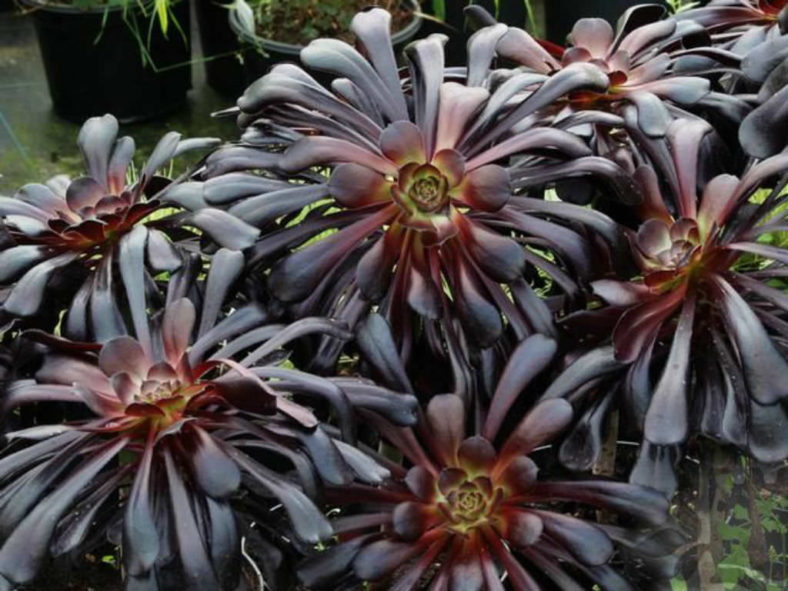Aeonium arboreum 'Zwartkop', commonly called Black Rose, is an ornamental succulent grown for its purplish-black leaves arranged in a rosette. It grows outdoors in USDA Plant Hardiness Zones 9 through 11, adding visual interest to garden beds year-round. Although typically problem-free, Black Rose plants may sometimes drop leaves. Most causes are temporary or avoidable, although some may indicate a serious issue that must be addressed to save the plant's life.
Seasonal Dormancy
Black Rose grows actively in spring and early summer and from fall into early winter. It enters dormancy as summer temperatures rise, shedding its leaves to channel energy toward its stems, growing tips, and roots. Fall rain revives the plants until colder temperatures set in, prompting a second, less profound dormancy period in winter. Leaf loss from seasonal dormancy is temporary and natural and is not accompanied by other worrying symptoms such as wilting, discoloration, or stem dieback. Therefore, you do not need to do anything except wait and water the plant occasionally so the stem does not dry out.
Cultural Problems
Cultural problems can cause massive damage to Black Rose, including leaf loss. Soggy soil and overwatering are among the most common and serious cultural issues for Black Rose because excess water can drown the roots and cause root rot, particularly during cold weather. Temperatures below 20°F (-6.7°C) will also severely damage the leaf tips and cause foliage loss. Conversely, direct sun exposure and temperatures above 100°F (38°C) can also cause leaf loss and damage, especially when the soil is too dry. Growing Black Rose in a fast-draining bed with light afternoon shade in hot, dry inland areas helps limit stress-related leaf loss and provides cover during cold or frosty weather.

Disease Damage
Root rot strikes when Black Rose is in cold, wet soil. It causes mushy, blackened stems and a general decline in the plant's appearance and vigor, with leaf drop. Little can be done to help Black Rose, afflicted with root rot, so prevention is the key. First, plant it in a bed or pot with gritty, fast-draining soil and provide adequate sun exposure to help keep the soil warm and dry. If root rot symptoms appear, such as soft spots on the stem or minor leaf loss, stop watering for several weeks to see if the problem resolves. If the symptoms persist and worsen, the plant may need to be replaced.
Pest Infestations
Severe infestations of mealybugs and spider mites may cause foliage loss in Black Rose, although it is rare in healthy, unstressed plants. Accompanying symptoms include discolored leaves, stem dieback, and sticky or cottony residue between the leaves. Infestations of either pest type can be treated with a liberal application of ready-to-use insecticidal soap to the tops and undersides of leaves at 7- to 10-day intervals. Proper care will help prevent severe pest infestations in Black Rose, and plant it in a bug-free site away from areas where infestations have previously occurred.
Source: sfgate.com
Links
- Back to genus Aeonium
- Succupedia: Browse succulents by Scientific Name, Common Name, Genus, Family, USDA Hardiness Zone, Origin, or cacti by Genus